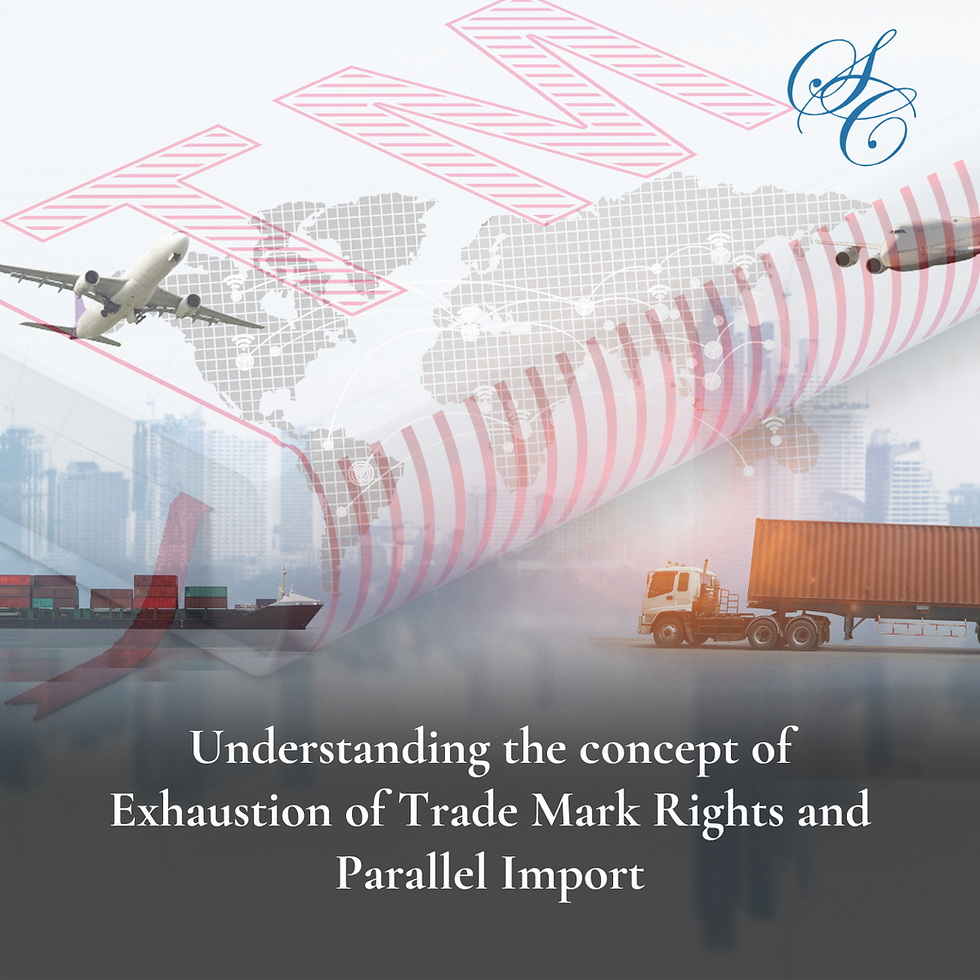De Minimis in Copyright Law – Trivial or Proceed to Trial
- Sarwajeet Singh
- Jul 31, 2021
- 3 min read
Our Associate, Vishesh Kumar discusses “De Minimis in Copyright Law – Trivial or Proceed to Trial”
In the digital era where almost everyone is a vlogger or an influencer, where does one draw the line between an actual case of copyright infringement or an ‘infringement’ too trivial to even act against?
For further clarity, consider this situation. You are walking past the most stunning paintings known to mankind constantly vlogging the experience for your “followers”. All this while being blissfully unaware that you are communicating another person’s artistic work to the public at large which, when scrutinized through the lens of the relevant statute, constitutes copyright infringement. But would it make sense, in terms of business, public relations, costs, etc., for the copyright holder to go after you when the act is so trivial or insignificant to act against?
This is where the concept of De Minimis comes in. The term De Minimis has been derived from the legal maxim ‘De Minimis Non-Curat Lex’ which means that ‘the law does not concern itself with trifles’. The concept, in very simple terms, stands for the principle that some matters of infringement are so insignificant that they are not worth judicial scrutiny. Accordingly, when the supposed ‘infringement’ or ‘copying’ is too trivial or inconsequential, a claim of De Minimis may prove to be useful in defeating such a claim of infringement.
The common law concept of De Minimis, which has been regularly applied in countries such as the United States, is now finding mainstream acceptance in India as a valid defence to a claim of copyright infringement. This acceptance has primarily stemmed from recent judgments where De Minimis has been recognized as a valid defence to copyright infringement. However, it is pertinent to mention that while De Minimis has only been used as a defence in copyright infringement cases in India, countries such as the United States have started applying it in both trademark and copyright infringement cases.
The Indian judiciary’s first tryst with De Minimis came in the case of Super Cassette Industries and Ors. v. Chintamani Rao and Ors. wherein a Single Judge of the Delhi High Court rejected the defence of De Minimis by stating that Indian copyright law lays down specific rights vested in each party while also specifying the exceptions to infringement. Accordingly, since the defence of De Minimis has not been incorporated in the statute, the Single Judge held it cannot constitute a valid defence to an infringement claim under law.
However, one of the parties aggrieved by the order preferred an appeal which was taken up in India TV Independent News Service Pvt. Ltd. And Ors. v. Yashraj Films Pvt. Ltd. In this instance, the court held that as compared to other areas of the law, copyright invites the maximum trivial violations and that mundane activities such as clicking a picture of a sculpture or the waiters and the waitresses singing “Happy Birthday To You” at a child’s birthday party at a restaurant, are ready examples of the frequency with which minor violation of copyright takes place, day after day, place after place, all over the world. The court went on to state that if such actions are charged as infringement, then courts will end up becoming overburdened with litigation and the only way to avoid such a scenario is to apply the concept of De Minimis.
The court laid down the following factors to be considered in order for an infringing use to qualify as De Minimis.
The size of the use and the type of harm it may cause. It is important to give equal weightage to both size and type of harm as it is possible that the use, while not being substantial in size, can still cause grave harm to the rights of the copyright holder.
The cost of adjudication of the matter. During such an analysis, the court may look at the cost of adjudicating the matter and do a comparative analysis with the amount of harm such use can cause.
The purpose of the violation
The effect on the legal right of third parties. While the court did not elaborate further on this criterion, it is possible that the court may look at the potential effect the infringement may have on the market value of the copyrighted work.
The intent behind the infringing use.
However, similar to every other legal concept or principle, the above-noted factors cannot be used in a straitjacketed manner. Each and every case has to be scrutinized and assessed according to its own peculiar facts and circumstances.
The concept of De Minimis in India, even though at a nascent stage right now, has surely helped reduce the burden of courts by discouraging frivolous litigations while also protecting bona fide and unsuspecting citizens who may have, without any knowledge or intent, committed an act of copyright infringement.




Comments